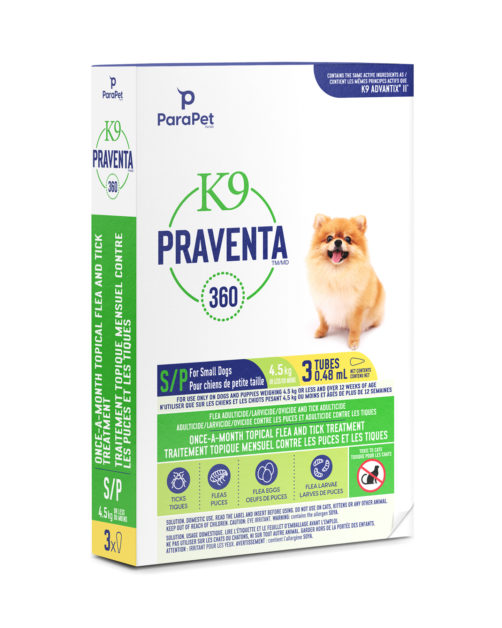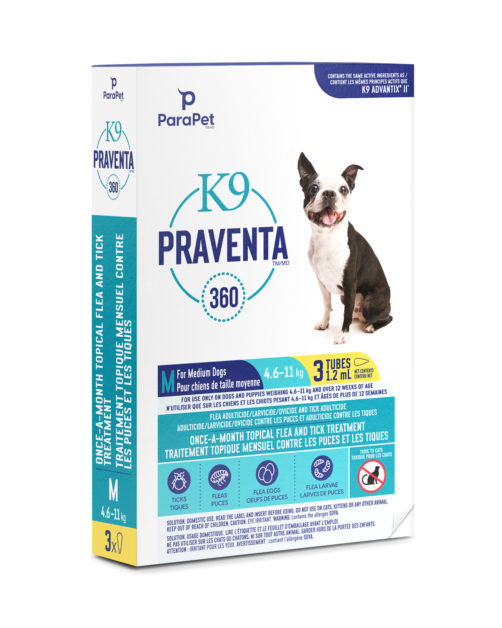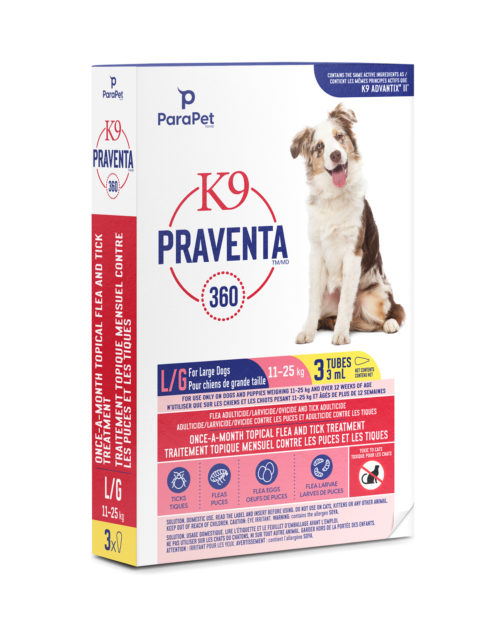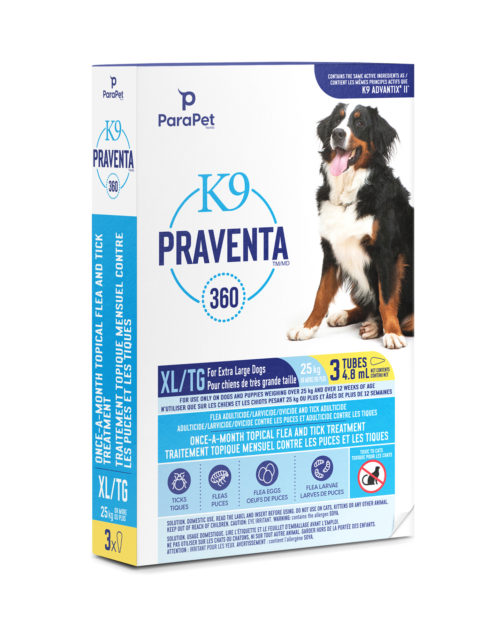With the days getting longer and winter slowly coming to an end, it’s only a matter of time before warmer temperatures are upon us. Whether it’s a hike in the woods or a leisurely walk in the park, many of us are eagerly looking forward to getting out and enjoying the nice weather.
But the start of warmer weather also heralds the start of tick season. It’s important to check you and your pet regularly for ticks after spending time outdoors. Ticks can carry a variety of diseases that can be transmitted when an infected tick bites, with Lyme disease being the main tick-borne disease of concern in Canada.
Warm Weather Brings an Uptick in Ticks
While any season can be tick season (some ticks are able to survive the winter by hiding under snow and leaf litter, becoming active once temperatures reach 40 C), typically tick season is associated with the warmer months.
Ticks are parasites that feed on the blood of their host and are part of the arachnid family, related to spiders, mites, and even scorpions. They attach themselves to animals and humans by biting and burying their heads into the skin.
Ticks have four life stages: egg, larva, nymph, and adult. It’s usually during the nymph stage – which occurs in late spring and early summer – that the ticks are most likely to find their way onto humans and animals. And because the nymphs are only about the size of a poppy seed at this stage, they very often go unnoticed.
Ticks don’t jump or fly, but crawl along the ground and hide out in dense vegetation, tall grass, weeds, or leaves, climbing up and resting on the tips of the plant while waiting for a host to walk by. Ticks can detect a host by sensing body heat and exhaled carbon dioxide from an unsuspecting passerby. When the host brushes by that spot, the tick quickly latches on and begins to feed. While ticks prefer shady, wooded areas – they can also be found in urban parks and even your own backyard!
What is Lyme Disease?
Lyme disease is an infection caused by the bacteria Borrelia burgdorferi. The disease takes its name from the town of Lyme, Connecticut in the United States, where the illness was first identified in the 1970s.
The primary carrier of Lyme disease is the blacklegged (or deer) tick, but don’t let the “deer” in the name fool you. These tiny ticks can latch on to any warm-blooded mammal and even some types of birds.
The tick acquires the Borrelia burgdorferi bacterium when it feeds on the blood of an animal that has been infected by the disease, and then it transmits the bacterium to the next animal it feeds on.

Once a tick attaches, it embeds its head in the skin and begins to feed. In most cases, an infected tick must feed for at least 24 hours before the bacteria is transmitted – so early removal is crucial to reduce the risk of your dog getting Lyme Disease.
Can I Catch Lyme Disease from My Dog?
Dogs are not a direct source of infection for people. Lyme disease can’t be transmitted from one pet to another, nor from pets to humans, except through tick bites. However, an infected tick could come into your house on your dog’s fur and then get on you or other family members. Other animals in the household may also be at risk.
That is why it’s extremely important to check your dog for ticks after spending any time outdoors. Spotting and removing ticks right away will help protect you both by preventing the transmission of tick-borne diseases.
Lyme Disease: Signs & Symptoms
The reason why it’s so important to check your dog for ticks is because your pet may not show signs or symptoms of Lyme disease for weeks or even months after an infected tick bites them – and many dogs that are infected sometimes don’t show signs of the illness at all. But if undetected and left untreated, the disease can cause your pet paralysis, kidney failure, serious cardiac and neurological effects, and even death.
To check your dog for ticks, run your fingers through your pet’s fur with a gentle pressure to feel for any small bumps. Ticks are tiny, so they may be difficult to spot visually, but if you run your fingertips over one, it may feel like a small bump or scab. Pay particular attention to the following areas: head and ears (inside and out), under the collar, between the toes, around the tail, under the front legs, between the back legs.
Signs and symptoms of Lyme disease typically include:
- Fever
- Loss of appetite
- Low energy
- Lameness (can be shifting, intermittent, and recurring)
- Generalized stiffness, discomfort or pain
- Swelling of joints or joint pain
The good news? The infection that can cause Lyme disease is preventable.
Tick Prevention
The best way to protect your dog is to take preventative measures such as avoiding areas where ticks may be found, checking your pet for ticks after spending time outdoors, and using a monthly topical treatment such as K9 Praventa 360. In addition to repelling ticks, K9 Praventa 360 kills adult ticks on contact, so your dog doesn’t have to be bitten for the treatment to work.
Here are a few additional suggestions to help keep you and your pet safe:
- Inspect you and your dog daily for ticks after walks through the woods or grassy settings.
- Wear light coloured clothing (to help make the ticks more visible). Tuck your pants into your socks when walking through grassy areas, and if walking in the woods wear a hat and other protective clothing.
- Stay on marked trails and cleared paths where possible.
- Ticks prefer warm, dark hiding places. Mow your lawn regularly and keep your yard free of leaf piles and litter. Use wood chips or gravel between lawns and wooded areas – this acts as a barrier to prevent ticks from crossing into the yard. Stack woodpiles neatly in an area exposed to the sun.
If you find ticks, remove them immediately with tweezers and don’t forget to perform a daily tick-check on any other household pets. The quicker you find and remove them, the less chances your pet will contract a tick-borne illness.




